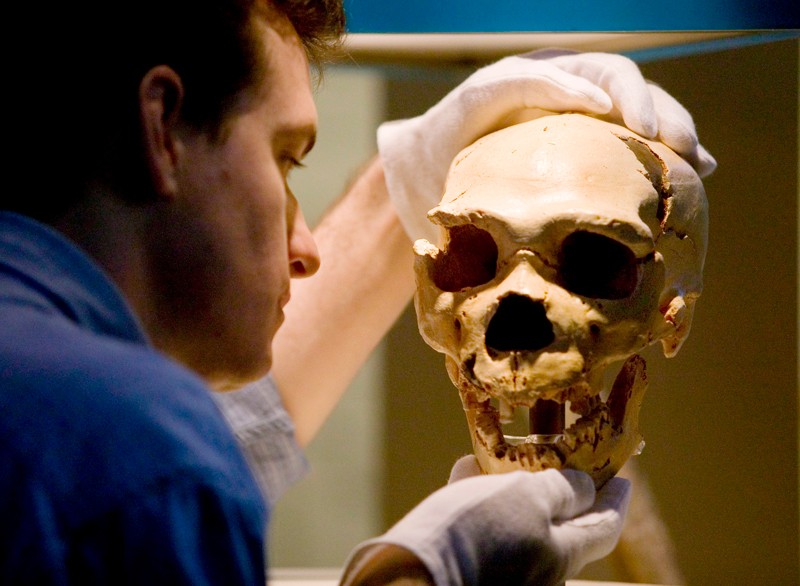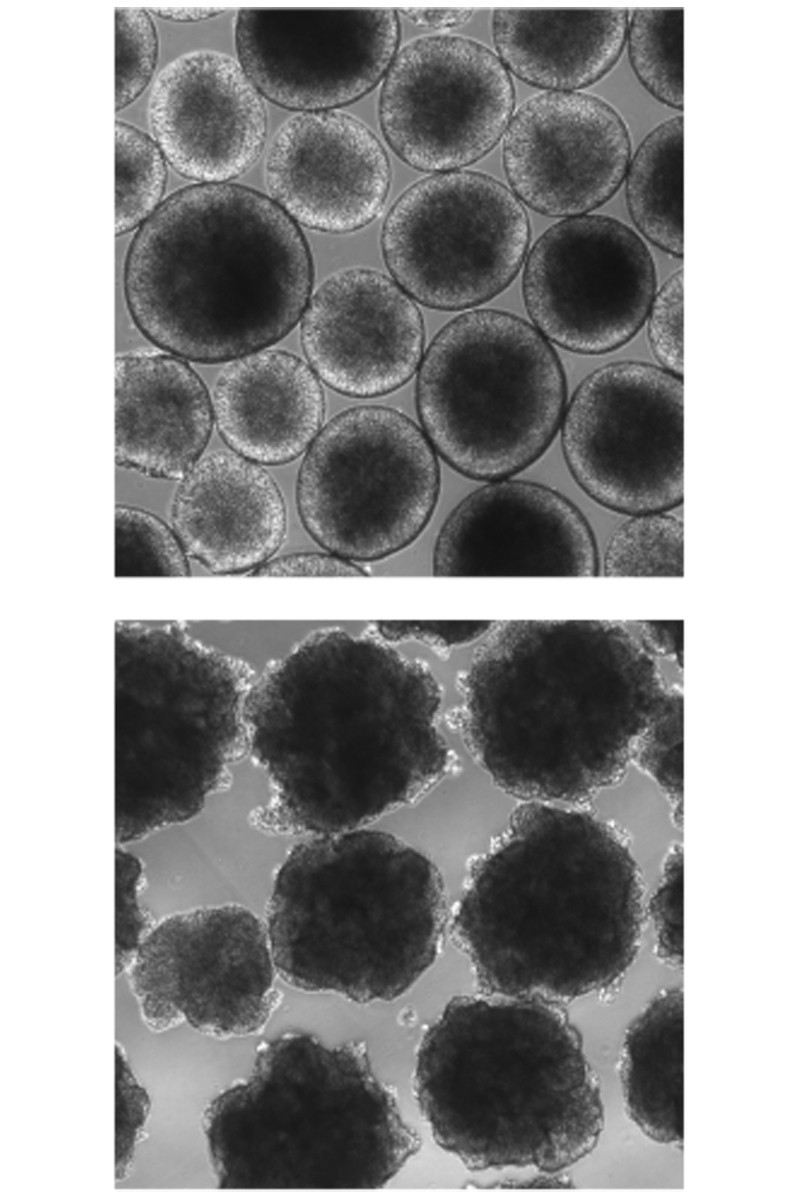Researchers have created tiny, brain-like ‘organoids’ that contain a gene variant harboured by two extinct human relatives, Neanderthals and Denisovans. The tissues, made by engineering human stem cells, are far from being true representations of these species’ brains — but they show distinct differences from human organoids, including size, shape and texture. The findings, published1 in Science on 11 February, could help scientists to understand the genetic pathways that allowed human brains to evolve.
“It’s an extraordinary paper with some extraordinary claims,” says Gray Camp, a developmental biologist at the University of Basel in Switzerland, whose lab last year reported2 growing brain organoids that contained a gene common to Neanderthals and humans. The latest work takes the research further by looking at gene variants that humans lost in evolution. But Camp remains sceptical about the implications of the results, and says the work opens more questions that will require investigation.
Humans are more closely related to Neanderthals and Denisovans than to any living primate, and some 40% of the Neanderthal genome can still be found spread throughout living humans. But researchers have limited means to study these ancient species’ brains — soft tissue is not well preserved, and most studies rely on inspecting the size and shape of fossilized skulls. Knowing how the species’ genes differ from humans’ is important because it helps researchers to understand what makes humans unique — especially in our brains.
The researchers, led by Alysson Muotri, a neuroscientist at the University of California, San Diego, used the genome-editing technique CRISPR–Cas9 to introduce the Neanderthal and Denisovan form of a gene called NOVA1 into human pluripotent stem cells, which can develop into any cell type. They cultured these to form organoids, clumps of brain-like tissue, up to 5 millimetres across, alongside normal human brain organoids for comparison.
It was immediately clear that the organoids expressing the archaic variant of NOVA1 were different. “As soon as we saw the shape of the organoids, we knew that we were on to something,” says Muotri. Human brain organoids are typically smooth and spherical, whereas the ancient-gene organoids had rough, complex surfaces and were smaller. This is probably because of differences in how the cells grow and multiply, say the authors.
Genome comparison
To determine which archaic gene to express in the organoids, the researchers compared a library of human genome sequences with near-complete genomes of two Neanderthals and one Denisovan. They found 61 genes for which the human version is consistently different from that in the ancient species. Of these, NOVA1 is involved in forming the brain’s synapses, or nerve junctions, and is associated with neurological disorders when its activity is altered.
The human NOVA1 gene differs from the archaic variant — which still is present in other living primates — by a single base which the researchers edited into the stem cells using CRISPR–Cas9. That difference swaps a single amino acid in the NOVA1 protein made by the archaic organoids. “The fact that all humans, or nearly all humans, now have this version and not the old one means it gave us a tremendous advantage at certain points during evolution. So the question we have now is, what are these advantages?” says Muotri.
The differences between the resulting organoids continued at the molecular level. The team found 277 genes that had different activity between the ancient-gene and human organoids; some of those genes are known to affect neuronal development and connectivity. As a result, the archaic organoids contained different levels of synapse proteins and their neurons fired in less orderly patterns than did those in the control tissues. There is also evidence that they matured more quickly.
Big difference
“The most significant finding is that that you revert [the gene] to an ancestral state, and you see an effect in the organoid,” says Wolfgang Enard, an evolutionary geneticist at Ludwig Maximilian University of Munich in Germany. He’s amazed that such a small genetic difference causes such obvious changes, but he is sceptical that the organoids’ odd appearance tells us much about Neanderthal brains.
Camp also cautions that it’s unlikely that these ancient-gene organoids fully represent true Neanderthal tissue. Instead, the characteristics observed could be the result of changing an important protein that is present in humans because of compounding effects of many mutations stacked on top of each other over time. “It’s like Jenga,” he says, “you pull out that amino acid and the brain doesn’t function.”
Still, the edited-organoid approach could be useful for studying brain evolution across primates, says Suzana Herculano-Houzel, an evolutionary neuroscientist at Vanderbilt University in Nashville, Tennessee. Muotri’s team plans to make organoids edited to contain other reverted genes that could offer insights into the human brain. If researchers can understand the evolutionary pathway that brought humans to our current state, he says, they might improve understanding of diseases specific to the human brain.
"in" - Google News
February 12, 2021 at 02:03AM
https://ift.tt/2NliDAF
Neanderthal-like 'mini-brains' created in lab with CRISPR - Nature.com
"in" - Google News
https://ift.tt/2MLa3Y1
https://ift.tt/2YrnuUx
Bagikan Berita Ini
















0 Response to "Neanderthal-like 'mini-brains' created in lab with CRISPR - Nature.com"
Post a Comment